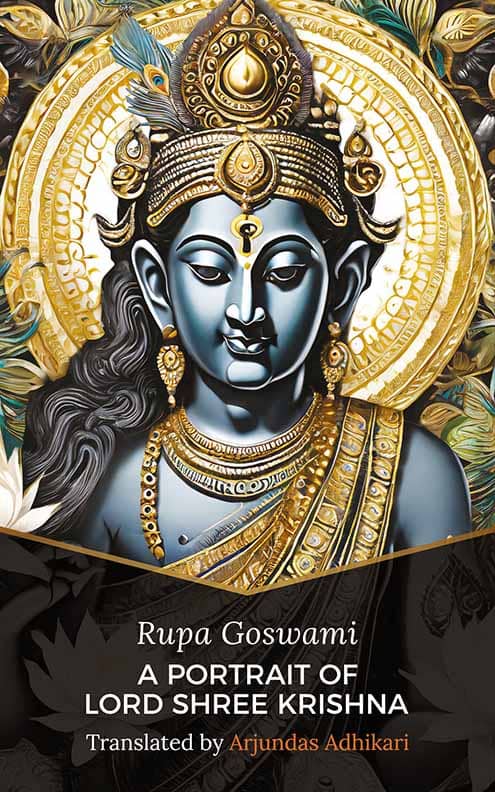
The gorgeous blooming lotus-lily is emblematic of the seeker who dwells in the world, and yet is quite transcendental to it. A lotus-lily is called pankaja (panka – mud, ja – born of) for originating in a muddy river bed, with the wonder of its beauty belying the nature of the place in which it embedded. Seekers reflect this beauty. Serious seekers well know their beautiful transcendence to be predicated on the upkeep of the pleasant habit of Krishna-mindfulness, through love.
Once upon a time in ancient India, when kings were accustomed to having more than one queen, the son of one such rich and polygamous monarch of antiquity faced a rude awakening when he found out that his own mother was only a queen of middle-ranking. This made him disappointingly further down the line of inheritors to the throne than he thought.
Smarting at the news of his ill-fortune, the proud prince vowed to worship Lord Vishnu (Krishna) to achieve his ambition of securing his father’s kingdom, and set about immersing himself in earnest meditation. However, when Vishnu personally appeared before him, the prince found that he no longer craved his father’s kingdom! “I was looking for broken pieces of glass,” he marvelled, “but instead, I’ve discovered a fantastic jewel – an exquisite and invaluable gem!”
The boy-prince was so instantly taken with Vishnu, that his urge to inherit his father’s kingdom stopped in its tracks. Lord Vishnu was definitely prepared to fulfil the boy’s prayer, but now the lad’s desire was eclipsed by his love for Vishnu, the boy was pleased to inform his Lord that he did not wish to pursue His offer.
Certainly, the emotional impact Lord Vishnu (Krishna) has when He makes an appearance is always reckoned as emotionally dramatic.
No more so than in the case of medieval India’s Shree Chaitanya, of whom it is said love of Krishna was so profound that the passing of a moment in Krishna’s absence was felt by him to be as insufferably long as the dragging on of a millennium!
Vishnu/Krishna-meditation, has been very popular for an immeasurable period of time, essentially because the divine Lord always has a universally irresistible allure. It’s what makes meditating on Him particularly easy, since our governing inclination is to dwell on whatever intensely moves the heart. However, what really drives this focus is what the well-wishing wise have always vouched: that love for Krishna is already couched deep within the heart and may be recalled by singing His names:
Hare Krishna Hare Krishna Krishna Krishna Hare Hare
Hare Rama Hare Rama Rama Rama Hare Hare
Once one’s attached to Krishna (Krishna – ‘all-attractive’), His attractive nature guarantees the kind of mindfulness we’re all looking for, namely, mindfulness without any gaps.
Spiritual mindfulness is called brahma-bhuta in Sanskrit, and is a lovely state of feeling equally benign towards one’s fellow living beings (samah sarveshu bhuteshu – ‘equally disposed’). Additionally, the disposition to be generally gracious rises in our consciousness in spiritual mindfulness; a feeling known as prasann-atma in Sanskrit. And, of course, whilst spiritually mindful, the peace we sustain delightfully allays stinging regret and feverish hope. Such a sublime state of mind is approachable by anyone, and is not the prerogative of an elite. And having been there, one naturally marvels at the means of arrival, for were the method not extra special, such a sublime altered state would not have arisen. “What went on there?” one might wonder. What transported me?

Tat tvam asi (Chandogya Upanishad 6.9.4) is a mystic mantra that insists that the pursuance of spiritual beauty is absolutely natural and that we are, fundamentally, loving spiritual beings. It is a mantra among many mantras disclosing that eternal (presently dormant) love for Krishna flows on forever, and with a little coaxing to get it going, fondness for that Lord of spirituality – who’s never out of touch with His own supernatural excellence – readily raises us to our own inherent state of lotus-lily excellence.
Arjundas Adikhari

